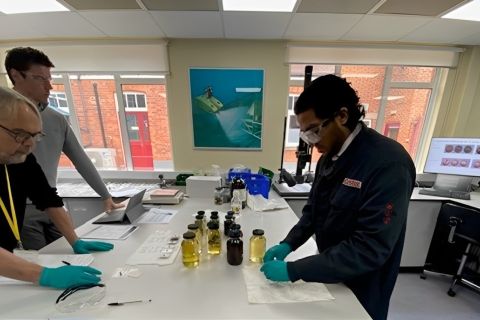For those producers thinking of tapping the public equity markets this year, their timing couldn't be better. On the heels of deal flow that grew during each quarter in 2003, Wall Street is now embracing new energy stock issues with open arms. And as the common-stock offering of Whiting Petroleum Corp. signaled last fall, that goes for IPOs. "Investors have become more confident that commodity prices are going to remain somewhat higher over a more extended period of time than most people thought," says Tom Petrie, co-founder of Petrie Parkman & Co., the Denver- and Houston-based investment-banking firm. On the natural gas side, optimism is developing that a price range of $4 to $6 may well be what the market will predominantly witness during the next several years in the face of declining conventional gas supplies in North America and an economic recovery that's bolstering demand, he says. Also, some members of OPEC have signaled that because of the declining value of the U.S. dollar, the cartel might consider moving upward its targeted $22 to $28 band of oil prices to $25 to $30. Overarching this outlook, investors want to put money to work in oil and gas stocks because the hard assets behind them represent a hedge against looming inflation-and because E&P stocks still look reasonably valued on cash flows, the banker says. Also, there's a general market interest now in small- to midcap stocks. Stresses Petrie, "We should see 2004 energy-equity issuance up nicely versus 2003-possibly including more IPOs-without getting into nosebleed territory." The only constraints he sees on equity deal flow this year are the healthy internal cash flows that E&P companies are now generating-which may curb the desire of many operators to issue more stock for growth-and the availability of private-equity funding that in some cases may be more appropriate and quicker to access. Jim Hansen, managing director and head of the energy group for First Albany Capital Inc. in Houston, also sees sustained healthy commodity prices-$27 for oil and $5-plus for gas-driving investor interest in the oil and gas sector in 2004. Nonetheless, there may be less of a tendency this year for public and private producers to access the public capital markets. "The days of irrational exuberance by E&P companies during times of high commodity prices are over," says Hansen. "Upstream operators have been told by investors that they have to be much more focused on judicious capital spending and return on capital employed-that they'll be judged, from a valuation perspective, on how well they maintain reserve replacement at low finding and development costs. "So, except for funding opportunistic acquisitions, operators are going to be cautious about issuing public equity or taking on additional debt." On top of this, he says, many management teams coming out of sold public E&P companies have decided not to replicate new public entities, but to create value by staying in the private sector and accessing private debt and equity for growth. "In light of more stringent corporate-governance issues and the pressures of quarterly financial reporting to investors, the appeal today of being a public company is not as great as it was 10 years ago," observes Hansen. Consistent with this trend, First Albany Capital has recently been talking to several private E&P companies seeking to access private equity and debt. Meanwhile, the market-maker has also been talking to publicly traded producers seeking to raise small amounts of private capital through PIPE (private investments in public entities) offerings-and with a few private operators considering the debut of IPOs in 2004. "For some private producers, the reasons for going public are still there-liquidity, broader access to capital and higher valuations," concedes Hansen. First Albany this year will focus on sponsoring all sizes of growth-oriented E&P companies, particularly small- and midcap public and private operators. "This includes not only the likes of Brigham Exploration, a small Austin, Texas-based operator, but also larger-cap names like Murphy Oil, which still has great growth potential."
Recommended Reading
Chevron, Total’s Anchor Up and (Almost) Running
2024-05-07 - During the Offshore Technology Conference 2024, project managers for Chevron’s Anchor Deepwater Project discussed the progress the project has made on its journey to reach first oil by mid-2024.
Electric Hype vs. Hydraulic Reality: Advantages of Traditional Systems
2024-05-07 - Castrol's new fluid prevents gas hydrates in deepwater control systems.
EOG: Utica Oil Can ‘Compete with the Best Plays in America’
2024-05-06 - Oil per lateral foot in the Utica is as good as top Permian wells, EOG Resources told analysts May 3 as the company is taking the play to three-mile laterals and longer.
E&P Highlights: May 6, 2024
2024-05-06 - Here’s a roundup of the latest E&P headlines, including technology milestones and new contract awards.
US Oil, Gas Rig Count Falls to Lowest Since January 2022
2024-05-03 - The oil and gas rig count, an early indicator of future output, fell by eight to 605 in the week to May 3, in the biggest weekly decline since September 2023.




